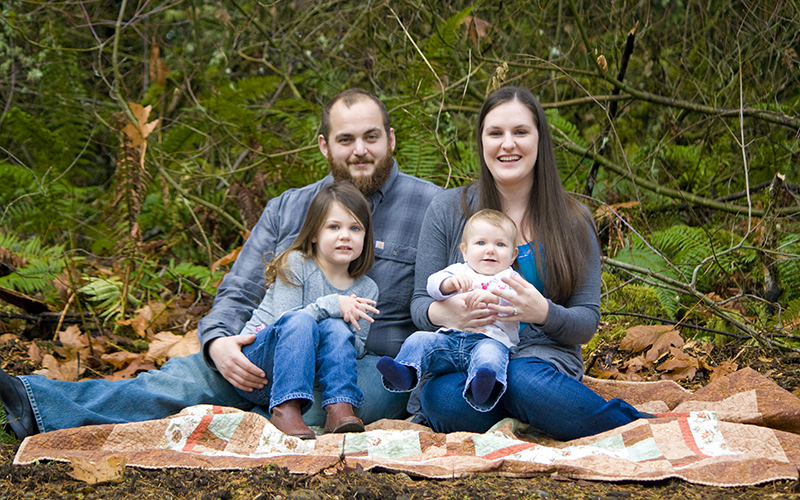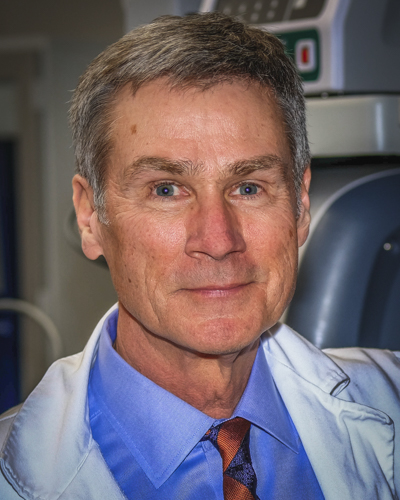
It was a normal day at home with her three-year old when 27-year old Kelsey felt her heart start racing. She’d experienced the sensation a few times, casually attributing it to a panic attack. This time though, Kelsey was halfway through her second pregnancy and her rapid heartbeat was not slowing. By hour four, with her vision fading in and out, exhaustion set in and she went to urgent care.
Arriving with a heart rate of 220, urgent care staff immediately called 9-1-1. “They worked hard to stabilize my pulse before transporting me to Valley’s Emergency Department,” says Kelsey. “When I got there, there was a lot of concern over my pregnancy, collaboration between many doctors, and lots of tests before I ended up in Critical Care for a week of strict bedrest to get my pulse stable.”

It’s an Electrical Problem
Valley cardiologist and cardiac electrophysiologist Lee Dolack, MD, diagnosed Kelsey with supraventricular tachycardia, or SVT, dangerous rapid heart rates (120+ beats/minute), typically the result of an abnormal extra “wire” in the heart’s electrical system. While SVT is most often seen in younger, healthy patients without any structural heart problems, it’s rarely seen during pregnancy (only 35 per 1,000,000). Kelsey’s pregnancy made it necessary to delay many typical diagnostic tests.
A Second Scare
With the goal of keeping Kelsey stable until her baby could be born safely, Dr. Dolack consulted regularly with Valley and UW Medicine maternal fetal medicine specialists and high-risk pregnancy obstetricians to custom-tailor her medication dosages and heart monitoring. “At 30 weeks,” says Kelsey, “I went into SVT again and landed in the ED. Ultimately, I was transferred to UW Medical Center’s high risk cardiac unit. Their staff collaborated with Dr. Dolack and high-risk OB specialists, Dr. Cheng and Valley’s Dr. Hwang. It was an unusual situation, but a big blessing to be there. Dr. Dolack advocated for me being able to go home again during my pregnancy and made lots of contingency plans to make that happen.”
Phase One Mission Accomplished
Well-supported by family, Kelsey was indeed able to return home. Her pregnancy was supervised weekly at Valley’s Maternal Fetal Medicine Clinic by Edith Cheng, MD and Joseph Hwang, MD until Kelsey’s daughter was born at 37 weeks, strong and healthy. Dr. Dolack took Kelsey off her heart medications to allow for breastfeeding.
A Permanent SVT
Solution
Having achieved the first goal of delivering a healthy baby, Kelsey’s SVT still
needed a permanent solution. Together she and Dr. Dolack made a plan for an
outpatient catheter ablation in Valley’s new electrophysiology lab. They
scheduled the procedure for two months out to allow Kelsey time to heal after
childbirth.
The ablation procedure involves placing a small catheter through a blood vessel in the groin and threading into the heart. Then a small burn or small freeze is created in the abnormal area of the heart that is causing the fast heart rhythm. Kelsey’s 160-minute ablation procedure worked perfectly. “I was so thankful for Valley’s new facility and all the great nurses who stayed by my side in the operating room,” she says.
“At the beginning,” says Kelsey, “Dr. Dolack told me we’re going to walk this path together. His deep research and plans for every scenario were extremely comforting. Every time I was freaked out, he would say ‘This will be okay. I’ve got this.’ After the ablation, he’s made it so I just get to live my life, with no heart medicine and only a 2% chance of future SVT. He told me not to think about it or worry. Just go run marathons and take care of my kids.”


Dr. Dolack is the best in his field. He is amazing! I have been his patient since 2013. Further, I was diagnosed with atrial fibrillation. My situation is chronic, but through the years, Dr. Dolack remained focused, passionate about finding a solution to my condition, and compassionate to my well-being. Anyone who has received care from him can attest to that. I am very grateful that Dr. Dolack is my physician.
Thank you for your nice comment. We’ll pass it along to Dr. Dolack.